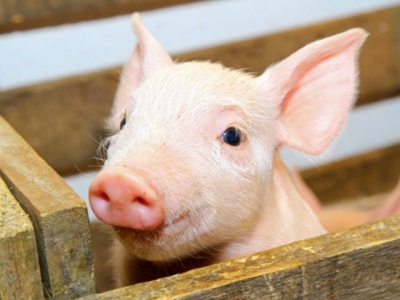Replacing whey protein concentrate in piglet formulas

Freeimages | hisks | Alternative ingredients, such as egg protein, can be used to replace WPC80, but some creative thinking is required for the substitution to be complete in all nutritional and functional aspects.
Whey protein concentrate is a valuable yet expensive ingredient, and alternatives can be used if certain formulation aspects are considered.
Whey protein concentrate (WPC) is an expensive, yet common, feed ingredient used in many piglet formulas, sometimes as the only source of milk protein. It is high in crude protein, ranging from from 30 to 80 percent, depending on the level of lactose and ash extraction. The high protein variety, WPC 80, is the most common, and it is the focus of this discussion that provides alternatives to this valuable ingredient.
Protein
The protein of WPC is of extremely high digestibility, exceeding 90 percent. It is rich in lysine, threonine, valine and isoleucine, but relatively low in threonine, methionine and cysteine. Compared to common piglet feed specifications, WPC is an ideal protein with slight deficiencies that can be covered easily by synthetic methionine. Thus, when removing WPC from a piglet formula, it is methionine that must be carefully balanced first to avoid a deficiency, with tryptophan being second in importance.
Alternative proteins that can cover the supply of amino acids offered by WPC include mostly products of vegetable origin. Such products are wheat gluten, pea protein, potato protein, soy protein concentrate and rice protein. All of these proteins can be equally high in protein content (ranging from 70 to 90 percent) and of equally high digestibility (in high quality products treated properly). Some of these ingredients come with their own problems, and as such a blend is often recommended when they are to constitute more than 5 percent of the total diet. Where still permitted, meat meal, fish meal and poultry meal can contribute towards meeting the amino acids needed in replacing WPC, but these ingredients can be only of the highest possible quality in order to match the digestibility of WPC protein.
Palatability
This is a factor often overlooked when replacing WPC. Vegetable proteins have a very blunt taste, whereas WPC is extremely tasty and palatable. As such, when WPC is one of the few or even the only ingredient in a formula that imparts a favorable taste, its replacement by a vegetable protein will reduce acceptance of the diet given all other factors remain similar. Suitable palatants include sucrose or any alternative sweetener.
Pellet quality
High levels of WPC increase pellet hardness. Thus, when WPC is removed from a formula, care must be taken so that pellet durability does not suffer. The easiest way, if the formula contains such ingredient, is to increase the level of wheat against that of other cereals. Perhaps, a small increase in crude fiber should also be considered, in very-low fiber diets, to provide extra strength to the pellets, or at least a pellet binder can be included as a last resort.
Lactose
Whey protein concentrate contains residual amounts of lactose, which is about 5 percent in WPC80. If WPC80 is the only source of lactose in a formula, and WPC80 makes more than 5 percent of the final feed (contributing at least 0.25 percent lactose), this amount should be replaced with lactose or sucrose. Of course, when a WPC product with lower protein and more lactose is replaced, then the naturally higher lactose contribution should always be compensated.
Immunoglobulins
Whey, in general, is a good source of immunoglobulins, which offer sufficient protection against pathogens in the lumen and as such enhance animal performance. They are found in milk (especially in colostrum), blood, and of course, eggs, and as such they are a natural "antibiotic." Whey powder (11 percent protein) contains a very low level of immunoglobulins (about 3 percent), and these bovine immunoglobulins are of a rather weak nature (as they are not specific against piglet pathogens). Nevertheless, in a concentrated product like WPC, where the protein is as much as seven to eight times higher than in whey powder, the immunoglobulin concentration can easily exceed 20. When WPC80, as the only source of immunoglobulins in a diet, is replaced by a vegetable protein, alternative sources of immunoglobulins are required. To this end, animal plasma and hyper-immunized egg protein, are both rich but quite different sources of immunoglobulins.
Conclusion
Replacing whey protein concentrate in a piglet formula is not as easy as it appears to be in the first place. Not only other equally digestible ingredients must match the protein contribution of this ingredient, but secondary aspects must also be considered. The issues of palatability, pellet quality and immunoglobulin support must be addressed with equal importance.
Có thể bạn quan tâm
Phần mềm

Phối trộn thức ăn chăn nuôi

Pha dung dịch thủy canh

Định mức cho tôm ăn

Phối trộn phân bón NPK

Xác định tỷ lệ tôm sống

Chuyển đổi đơn vị phân bón

Xác định công suất sục khí

Chuyển đổi đơn vị tôm

Tính diện tích nhà kính

Tính thể tích ao hồ



 Nutrient profile of wheat co-products updated for swine
Nutrient profile of wheat co-products updated for swine  Piglet gut health linked to high feed intake
Piglet gut health linked to high feed intake